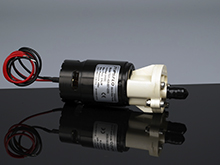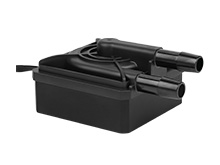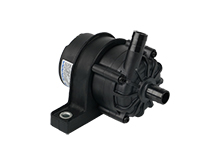Analysis of Centrifugal Pump Dry Running Protection Technology: Scientifically Preserving Equipment Lifespan and Properly Addressing Absolute Dry Running Risks"
2025-04-30
In applications spanning household appliances, medical equipment, industrial machinery, and water treatment systems, centrifugal pumps serve as core power units whose stability and service life directly determine the operational efficiency of entire systems. However, in practical scenarios, the frequent operational misconceptions of "dry running" and "absolute dry running" often become hidden threats that significantly shorten the pump's lifespan. This article delves into the working principles of mini centrifugal pumps, explores the technical essence of dry-running protection mechanisms, and emphasizes the scientific rationale behind the "absolute dry running" principle. By clarifying these critical points, we aim to help users establish proper equipment operation awareness and mitigate avoidable risks.
Dry Running vs.Absolute Dry Running: Superficial Similarities, Fundamental Differences"
In operational scenarios of mini centrifugal pumps, the terms 'dry running' and 'absolute dry running' are often conflated, yet they exhibit fundamental differences in physical state, damage mechanisms, and protection strategies.
Wet Dry-Running (Protection-Triggerable)
When residual liquid remains in the pump chamber (e.g., incomplete drainage after shutdown) but insufficient inlet flow prevents effective circulation, the impeller experiences wet dry-running in a moist environment. Under this condition, the lack of sufficient medium reduces operational resistance, causing a significant drop in motor current. In such scenarios, the centrifugal pump's dry-running protection mechanism can activate via an intelligent monitoring system. Once the pump detects the current decrease, it initiates protection mode, switching to reduced-speed operation to prevent damage.
Absolute Dry Running (Strictly Prohibited)
If the pump chamber is in a completely dry state and forcibly started, the precision components such as the rotor, ceramic shaft sleeve, and sealing gasket will experience direct dry friction, leading to more intense internal abrasion within the pump. In this condition, the motor load surges drastically, the current rises instead of dropping, and the rotational speed abnormally soars accompanied by sharp friction noises. Such a state can easily cause rotor seizure or even trigger more severe mechanical failures.
Dry-running Protection Technology: The Last Line of Intelligent Defense
For dry-running scenarios in wet conditions, our centrifugal pumps are equipped with standard dry-run protection. When water is absent, the pump operates at low speed. If the dry state persists, the protection cycle activates automatically, and normal operation resumes upon water return. Additionally, we offer customized dry-run protection solutions tailored to specific customer operating conditions to meet diverse application requirements.
Why Is Absolute Dry Running Unprotectable?
The fundamental design premise of dc centrifugal pumps is 'water as the working medium.' During absolute dry-running, the pump chamber becomes completely dry, causing direct metal-to-metal friction—akin to 'glass scraping with a blade.' Experimental data confirms that dry-running inflicts explosive and irreversible damage: the shaft sleeve and rotor undergo thermal bonding due to extreme temperatures, the motor burns out from overload, and the pump seizes catastrophically. Even immediate shutdown cannot salvage the damage, necessitating full replacement of core components.
Although our products are equipped with advanced dry-running protection systems, it must be unequivocally stated: centrifugal pumps DO NOT possess Absolute dry-running tolerance capabilities. All units feature prominently displayed 'DRY RUNNING PROHIBITED' warning labels. This restriction stems from the unique destructiveness of dry-running—such operation will inevitably cause rotor seizure and is strictly prohibited under all circumstances.
Correct Operating Guidelines: The Golden Rules for Extending Equipment Service Life
To prevent dry-running damage, it is recommended that users establish a three-tier protection system:
1.Startup/Shutdown Procedures
Ensure the pump chamber is fully filled with liquid before startup.
When shutting down, close the outlet valve first before cutting power to maintain a wet state in the pump cavity.
2.System Optimization
Install a filter at the inlet (to prevent blockages that may lead to fluid shortage).
Equip with a liquid level sensor for interlocked control (e.g., automatic shutdown at low tank levels).
3. Intelligent Monitoring
Regularly check no-load current values against performance inspection sheets.
Use IoT modules for remote monitoring of operating parameters (immediate alert if current fluctuations exceed 10%).
Dry-running protection for centrifugal pumps embodies the engineering wisdom of the smart era, while the warning "No Absolute Dry Running" remains an unbreakable law of mechanical principles. Only by understanding technical limits and adhering to operational standards can each device achieve its maximum potential. Choosing professionalism means choosing a commitment to lasting reliability—Topsflo continues to deliver high-quality micro pumps and pumping solutions for your needs.












